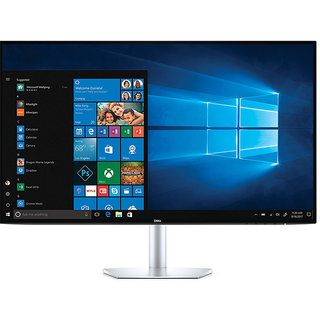Philips 436M6VBPAB Momentum 43-Inch 4K FreeSync Monitor Review: Better Than a TV
Why you can trust Tom's Hardware
Brightness and Contrast
To read about our monitor tests in-depth, check out Display Testing Explained: How We Test Monitors and TVs. We cover brightness and contrast testing on page two.
Uncalibrated – Maximum Backlight Level
To compare the 436M6’s performance, we chose the brightest HDR screens from our database. Three of them can hit 1,000 nits – Dell’s UP2718Q, Acer’s Predator X27 and Asus’ ROG Swift PG27U. The remaining screens are less bright but still capable. They are Samsung’s C49HG90 and Dell’s S2719DM.



Philips rates the 436M6 at 400 nits for SDR, but at maximum brightness settings we measured over 547, which is super bright. The effect is magnified by the jumbo screen.
The VA panel has excellent black levels and managed a second-place finish, despite the monitor’s high brightness. That resulted in a superb 4,797.2:1 contrast result, which is one of the highest SDR numbers we’ve recorded. These measurements were made with full-field patterns, so the zone dimming backlight did not come into play.
After Calibration to 200 nits (200 cd/m²)



In addition to reducing the brightness slider to 24 to get 200 nits, we tried calibrating the RGB sliders for a gain in grayscale accuracy. But that only reduced contrast by a tiny fraction and made no difference in the image’s appearance.
With all the monitors set at 200 nits, the 436M6 won the black level contest by a comfortable margin. In SDR mode, the backlight is always on, demonstrating the quality of the VA panel.
ANSI contrast is also pleasantly high at 3,688.9:1. This is an acceptable reduction from the static number and is mostly due to a small amount of extra brightness in the screen’s lowest zones (the ones nearest the backlight). Even without the extra dynamic range afforded by HDR, the 436M6 showed greater image depth than just about every monitor we’ve ever tested.
MORE: Best Gaming Monitors
MORE: How We Test Monitors
MORE: All Monitor Content
Current page: Brightness and Contrast
Prev Page Features and Specifications Next Page Grayscale, Gamma and ColorStay On the Cutting Edge: Get the Tom's Hardware Newsletter
Join the experts who read Tom's Hardware for the inside track on enthusiast PC tech news — and have for over 25 years. We'll send breaking news and in-depth reviews of CPUs, GPUs, AI, maker hardware and more straight to your inbox.

Christian Eberle is a Contributing Editor for Tom's Hardware US. He's a veteran reviewer of A/V equipment, specializing in monitors. Christian began his obsession with tech when he built his first PC in 1991, a 286 running DOS 3.0 at a blazing 12MHz. In 2006, he undertook training from the Imaging Science Foundation in video calibration and testing and thus started a passion for precise imaging that persists to this day. He is also a professional musician with a degree from the New England Conservatory as a classical bassoonist which he used to good effect as a performer with the West Point Army Band from 1987 to 2013. He enjoys watching movies and listening to high-end audio in his custom-built home theater and can be seen riding trails near his home on a race-ready ICE VTX recumbent trike. Christian enjoys the endless summer in Florida where he lives with his wife and Chihuahua and plays with orchestras around the state.

Sabrent debuts 5GB/s Rocket Nano 2242 Gen 4 SSD — a good fit for Lenovo Legion Go, laptops, and NUCs

AMD takes CPU market share from Intel in desktops and servers, but Intel fights back in laptops

Stack Overflow bans users en masse for rebelling against OpenAI partnership — users banned for deleting answers to prevent them being used to train ChatGPT


